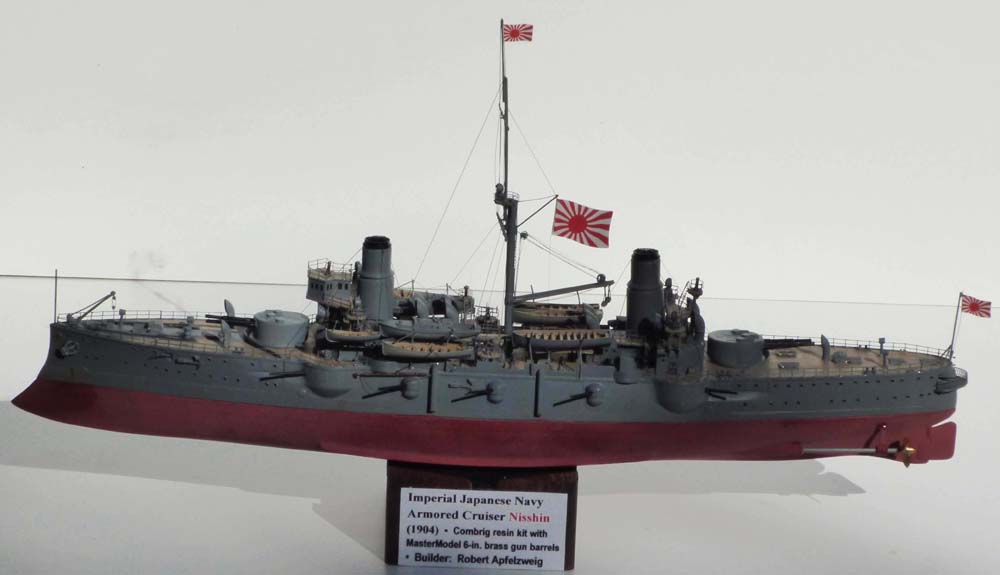
1/350 IJN Armored Cruiser Nisshin (Combrig)
|
by Robert Apfelzweig |

1/350 IJN Armored Cruiser Nisshin (Combrig)
The Nisshin and its near-sistership Kasuga were built in Italy and originally intended for Argentina's navy. That country changed its mind about purchasing these warships and the Italian builders were then approached by the Japanese, who then purchase both vessels, which were delivered just in time to see action in the Russo-Japanese War of 1904-05. The Nisshin was in the battle line at Tsushima and participated in that epic battle, suffering significant shell damage but surviving nonetheless. She participated in limited activities during World War I and became a training ship in 1927, ending up a target ship with the unusual situation of having been sunk twice -- in 1936, then being raised and partly repaired and then sunk again in 1942.Combrig's model is the smallest cruiser I've ever built in the 1/350 scale -- the ship was even shorter than the SMS Emden. The hull parts are very crisply cast but, as is often the case with Combrig's separate upper and lower hulls, they don't quite align properly in width. My fix for this can be seen in the last photo -- installing a pair of pine blocks that slightly widened the lower hull without being so tall as to interfere with attaching the upper hull. This worked well; the end-to-end alignment had no issues. The usual problem with Combrig kits is evident in this one, with ambiguous assembly instructions (various parts, particularly those associated with the small boats, have arrows indicating a general positioning but there is nothing specific on the deck or elsewhere to indicate precise location). The usual side and top views show the boats in position but the parts that are supplied cannot accommodate them there -- there just isn't enough room. There are also no boat cradles or other parts to directly attach the boats, which themselves are beautifully cast, to their platforms. The ship had only one mast, but Combrig supplies only 4 flimsy mast or spar parts (and in my kit they were warped) in addition to the stout lower mast, so the upper masts, spars, boat and boarding booms and flagstaffs will nave to be added from brass or plastic rods. The kit had no Imperial Japanese crests for the bow, so I use some from L'Arsenal; likewise, there were no decals or flags included. The 8-in. resin gun barrels were well-cast but I preferred to use MasterModel 6-in. brass barrels for the secondary guns and their 3-in barrels for the 4 casemated guns at the bow and stern. The kit's mediocre photoetch set includes 2-bar railing but you must glue the individual stanchions rather than a bottom bar. Some of the included ladders are too short and I had to use photoetch spares (and precise placement is also uncertain). The instructions include a painting scheme but the upper hull and most superstructure parts are only described as "grey", so I used Tamiya Kure Grey in spray can and acrylic form, and Tamiya acrylic Hull Red for the lower hull and acrylic Wood Deck tan for the main and some superstructure decks.
